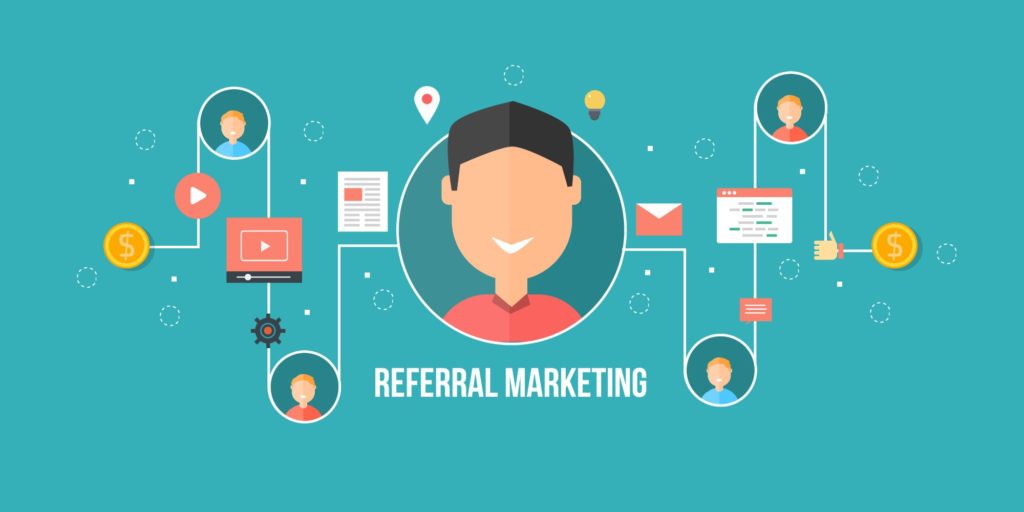
As a medical supplier, you rely on doctors, hospitals, and other healthcare facilities to keep your business growing.
One of the best ways to increase exposure and trust in your products is through referral marketing in the healthcare industry. Word of mouth recommendations backed by medical results can be an effective tool in your overall marketing strategy.
We are going to talk about the importance of referral marketing and share four key strategies that you can use to boost referrals in the future.
Quick Takeaways
- Referrals generate more high-quality leads than other types of marketing.
- Referrals have some of the highest lead conversion rates.
- Medical suppliers can use referral marketing along with other types of marketing to meet their business growth goals.
- Getting to know your customers is a key step in the referral process.
Why Referral Marketing in Healthcare is Important
Marketing in the healthcare industry can be a bit trickier than in other industries. This is mainly due to healthcare regulations, such as HIPPA and the federal anti-kickback statute (AKS). However, as a medical supplier, you still need to develop a marketing referral strategy. Social Media Today has some great statistics to show this:
High Quality Leads
You are a business-to-business (B2B) company. 78% of B2B marketers say that referrals bring them higher quality leads.
More Leads
In addition to creating better leads, referrals also generate a higher volume of leads, according to 60% of marketers.
Lower Costs
Referral programs are a great asset. Once you have set up a successful program, it should essentially run itself. 54% of marketers in the survey said that referral marketing comes with a lower cost-per-lead compared to other types of marketing.
Popular In the Industry
Referral marketing is a popular choice across many industries, including healthcare. Referral programs work and they can quickly add new customers to your business.
Great Source of Leads
Marketers rate referrals as the second-best source of high quality leads, with trade events coming in first.
Leads Turn into Sales
According to Harvard Business Review, consumers are four times as likely to purchase a product when it is recommended by a friend. In addition, 84% of B2B sales start with a referral.
Referral Programs Lead to Success
According to Copper Chronicles, companies with referral programs have better sales success.
When a friend, family member, or colleague recommends a business or product to you, it automatically comes with built-in trust. When a business rewards that referral or recommendation, customers are more likely to share their experiences with others.
Determine Your Marketing Goals
To help make your healthcare referral marketing work better for you, you should follow these steps.
1. Identify Your Goals
Obviously, your main goal is to increase the number of customers you have. However, you also want to get new, loyal customers who will share their experiences with other healthcare providers.
2. Use Various Methods to Reach Your Goals
Instead of focusing all of your time and money on one marketing area, consider multiple marketing avenues that could draw in more customers. These may include:
- Mass mailing campaigns: You could send out mailers to local hospitals and physician’s offices in the area you want to target.
- Monthly newsletters: Create a monthly e-newsletter that you send out to your customers and anyone on your email list. You can highlight new products and share details on the benefits of your referral program.
- Local events: Participate in as many events as you can that will connect you with hospital staff, doctors, and other healthcare professionals. This could include educational events, conferences, and hospital events.
- Advertising: Buy advertising spots in healthcare publications, on medical websites, and even social media sites.
3. Compare Results
With multiple marketing paths, you can compare the results you get from each method. Be sure to stick with your chosen methods for at least six months. Ask your new customers how they heard about your company and your products. If you find that some methods worked better than others, you can adjust your marketing strategy to focus on those areas.
Four Healthcare Referral Strategies to Help Grow Your Customer Base
Much of the healthcare industry is driven by referrals and recommendations – not simply doctors referring patients to specialists, but hospitals and healthcare organizations recommending medial suppliers and products.
If your business is ready to expand your referral network, here are a few strategies to get you started.
1. Find Your Main Sources of Referrals
If you sort through all your sources of referrals, you will likely find a small number of key organizations and individuals that drive most of your referral business. By focusing on these primary sources, you can prioritize your marketing resources and give these sources the attention they deserve. You want to ensure that they remain your primary referral source, and not someone else’s.
2. Learn What Makes Your Sources Happy
Talk to your referring organizations and ask them what they like the most about your business and products. Really listen to their answers and find ways to make them and their referrals happy.
3. Ask for Referrals Right Away
While this may seem pushy, asking for referrals early in the process is more likely to lead to success. During the initial purchase stage is when customers are most excited about your products. You can ask questions like, “Who do you know that would benefit from our services?”
4. Hold an Exit Interview
If a customer is finished using your services or products, schedule an exit interview with them. Ask them specific questions about what you did well or things you could have improved on. This is also a good time to ask for additional referrals with a question like, “Would you recommend our business?” If they say yes, ask for more information.
Improve Your Healthcare Referral Marketing Strategy to See Your Business Grow
Referral marketing in healthcare is an important part of any medical supplier’s marketing strategy. Focusing on your top customers and learning what makes them happy is the key to success.
Share Moving Media is here to help healthcare suppliers like you grow your business and reach new customers.
Contact us today, and we can help your healthcare business streamline your referral process.



